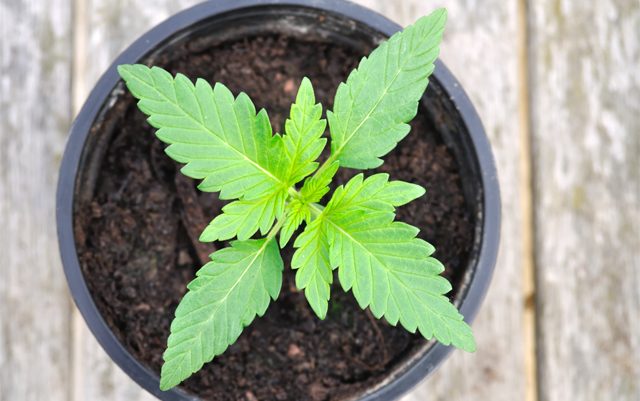Sodium (Na), while abundant in the earth’s crust in minerals and salts, is never found in its pure state since it is a highly reactive alkali metal. In many of its compound forms, especially common rock salt which is sodium-chloride (NaCl) or the mineral halite, sodium salts are highly water soluble. Oceans are very salty due to accumulating dissolved minerals over millions of years.
One of the most visible general stress indicators of cannabis is its degree of turgidity. Wilting or flaccid plants may be signaling water deprivation, heat stress issues or, less commonly, a sodium (or potassium) problem which causes cells to lose water through osmosis. Some plants can utilize sodium ions where potassium ions would normally be required, such as in regulating the action of stomata and guard cells. While sodium is vital to life processes, excess sodium salts in the environment can be desiccating and deadly to plants. Calcium, magnesium and potassium can become locked up by excess Sodium. While not well understood, it is thought that sodium salts are taken up by the roots into the plant passively, similarly to potassium. Sodium salt poisoning at the cellular level inhibits enzyme action leading to chlorotic symptoms and die-back. Toxic salt build-up is not pretty, you’ll notice crusty deposits at the top layer of your growing medium and a rapid necrosis of cannabis foliage. Flush with one to two times the volume affected.
Coastal soils might have naturally high salt content due to tidal and wind borne ocean salt deposition. Massive deposits of salts are found in many locations worldwide resulting from the evaporation of ancient seas. Arid lands can build up high salinity as scarce rainfall fails to rinse away leached minerals. Intensely irrigated fields eventually become non-arable over time as applications of chemical fertilizers build up and are not sufficiently flushed. The over-use of animal manures as fertilizer can also result in toxic build-up of salinity in the soil. Also be aware that water softening devices add salt while reducing other minerals, so it’s best to avoid treating your irrigation source this way.
A great deal of food crop research has been devoted to increasing soil salinity tolerance, both to expand potential farmable acreage and to mitigate polluting effects of soil mismanagement. Curiously, salt tolerant plants have also been shown to resist other abiotic threats, including drought and temperature extremes of cold or heat. Some plants have evolved mechanisms to combat toxic build-ups of salinity by collection and extrusion, compartmentalizing excessive salts in vacuoles, or storing the salt in lower, older leaves. Adequate levels of calcium are required for such plants to maintain these unique salt defenses.
Rescheduling of cannabis could lead to much needed university level research into salt tolerance and improved strain characteristics, but so long as our favorite plant is reviled as a Schedule 1 substance by the federal government, we will have to rely on the anecdotal observations of our horticultural peers on the front lines of the grow industry as well as extrapolating the results of research on proxy plant models. As usual, I turn to the tomato industry for additional insight. The tomato, like cannabis, is sensitive to soil salinity. Tomatoes are considered a valuable cash crop, therefore justifying tax-supported research. Sub-surface drip irrigation techniques have been shown to increase yield in the western San Joaquin Valley where the fine textured soil is adversely affected by shallow salty groundwater. Transgenic experimentation has produced strains of tomato with far greater salinity tolerance than their natural born cousins.
The soil salinity tolerance of various strains of industrial hemp, an obviously superior cannabis proxy to the tomato, has been studied in many countries, especially China. Unsurprisingly, research indicated that high salinity has negative effects on seed germination and seedling growth, but that small amounts of salts are essential for higher biomass.
Any advice and opinions about the cultivation of Cannabis offered by Bruce N. Goren are his own and do not represent the University of California or the Master Gardener Program.






